It’s time to show the world your research, how exciting! After all your hard work, all those hours in the lab, you can finally present your findings and talk to fellow researchers about your work! Except… you’ve left it a little late to create your poster. So, you dig out the trusty old PowerPoint template passed down for generations and fill in the gaps with your own findings. But be honest with yourself, how old even is that template? Instead of presenting the exciting poster you dreamed of, you’ve got an uninspiring wall of text which leaves your audience a little lost on what you actually discovered. Your academic posters should be keeping pace with the rate science is moving, not trailing behind! It’s time to upgrade your template and create beautiful and effective academic posters in PowerPoint.
PowerPoint is the go-to tool for creating academic research posters. If you weren’t already aware, we love PowerPoint, and for good reason! It’s easy-to-use, quick to edit and accessible to many, making poster creation a breeze. We’re going to take you through a whole host of PowerPoint poster creation tips from shaping your content into a clear and concise message, making the most of our free pre-designed poster templates to help you build effective and beautiful research posters!
Download our free templates here:
Academic research poster template – Portrait
Academic research poster template – Landscape
Let’s step into your audience’s shoes for a moment and consider the problem with the typical ‘wall-of-text’ poster. The reality is poster sessions attendees have very little time to see a LOT of posters. Time is of the essence and your audience are a moving target, so you’ve got to grab their attention, and fast! You can’t assume your audience will be happy to stand and read your poster for ten minutes.
Your research poster should be a conversation starter, not a wall of impenetrable text. A poster is simply a visual abstract, representing a concise and accessible summary of your research. Its purpose is to drive attention to your research, not show every detail. Think of it more like a billboard, designed to transmit key information quickly as your audience moves past.
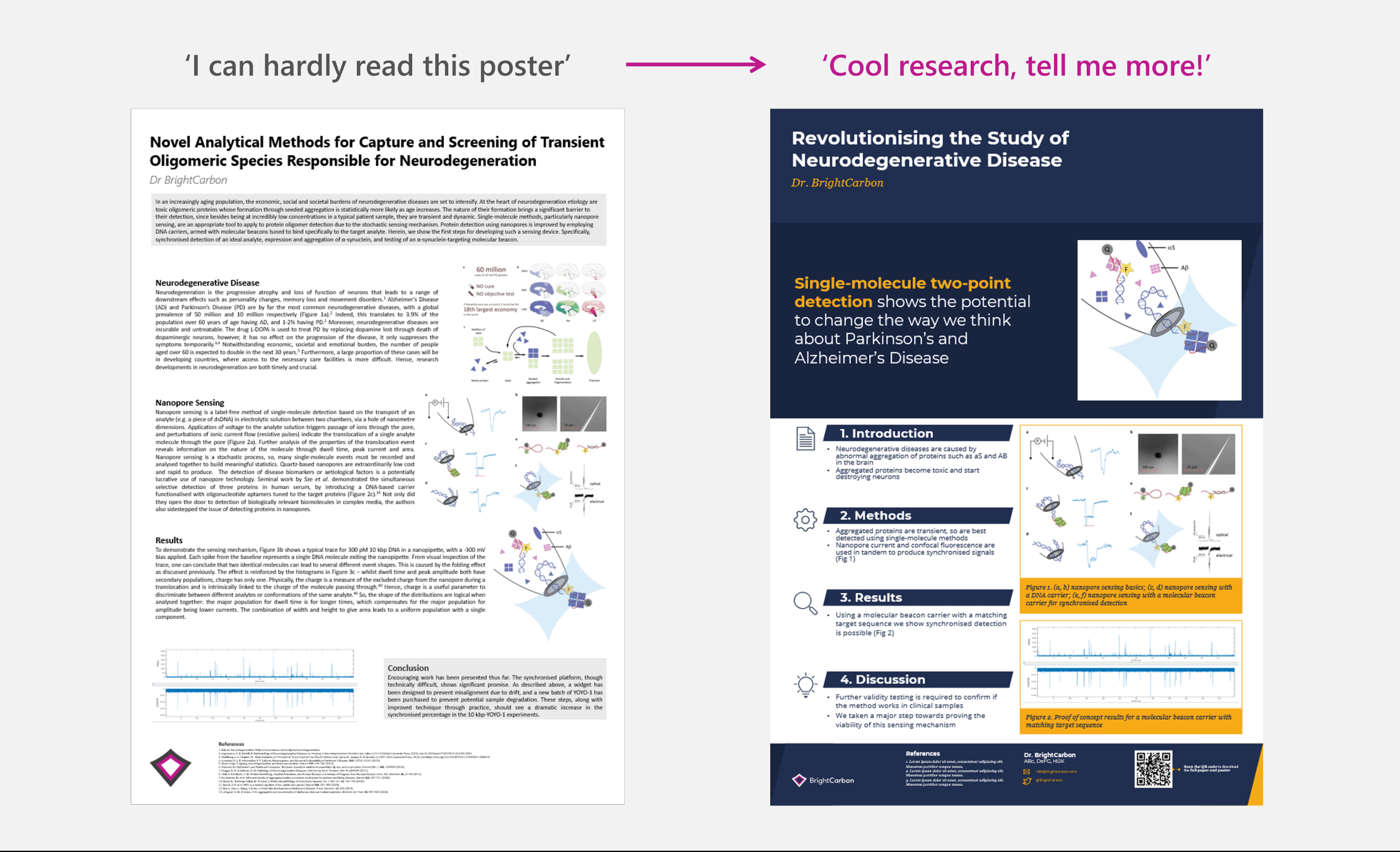
So, how do you go from your audience thinking ‘I can hardly read this poster’, to ‘Cool research, tell me more!’? First things first, get the content right…
Scripting
Layout
Creating an effective academic poster is all about making it easy for your audience to quickly understand the content. A clear and logical layout is fundamental to achieving this. Consider the hierarchy of your information. You want your audience to read the most important information first – in case they don’t make it to the bottom of the poster. So, place your key finding and a supporting graph or graphic right at the top of the poster. To ensure the rest of your poster is easy to read, consider the flow of your content. In the West, we read top to bottom, left to right so make sure your content follows this flow. You could number your sections or use arrows to guide the reader and use bullet points rather than long paragraphs of text. You can read more about hierarchy here
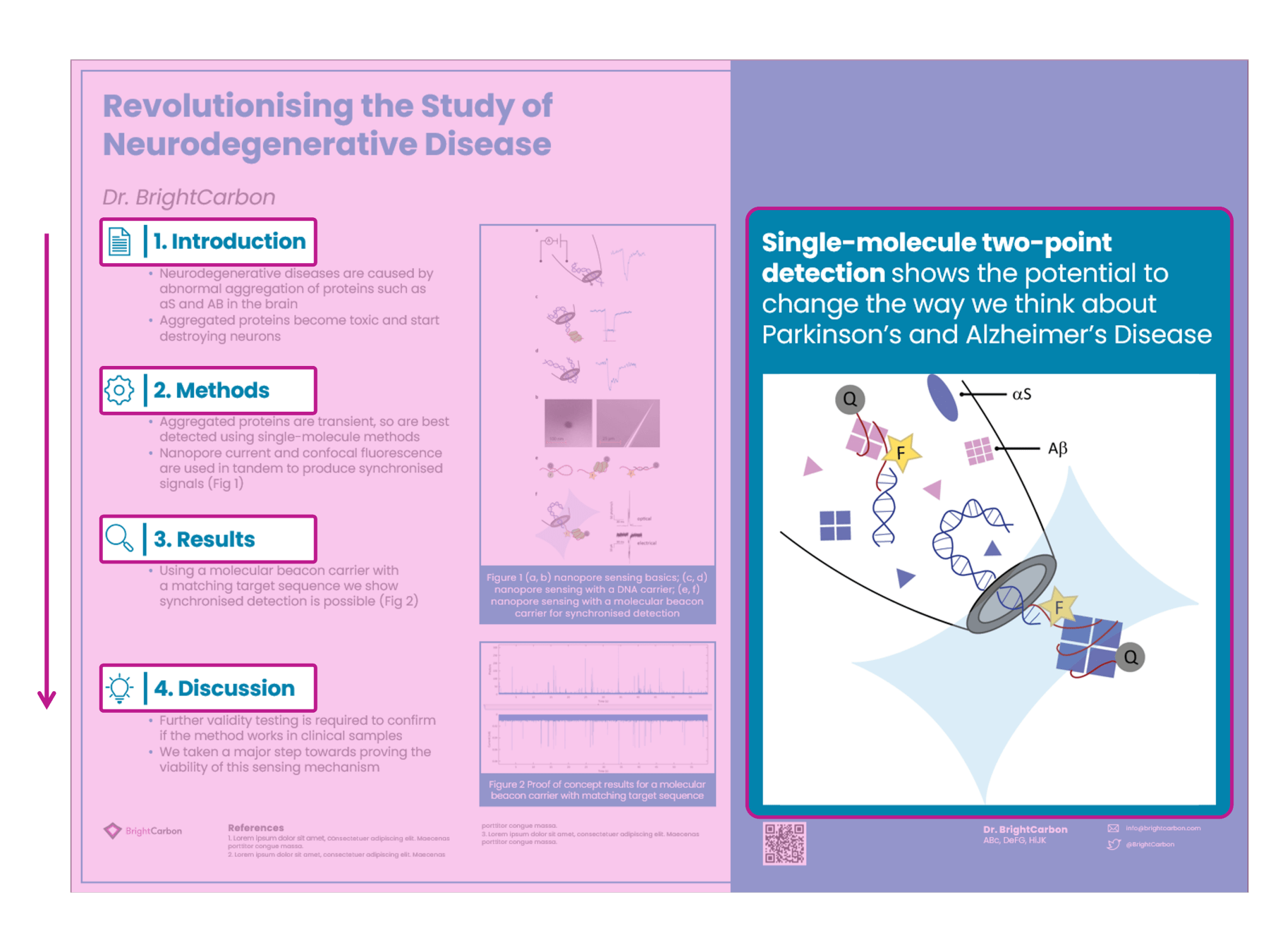
We’ve created 4 academic poster PowerPoint template layouts to help get you started!
Academic research poster template – Portrait
Academic research poster template – Landscape
Data
Your research will inevitably contain graphs and data, and whilst you may want to show them all off on your poster (because they took ages to make!) you need to decide which are the most important.
Your content is ready to go, now it’s time to make your poster beautiful! To give you a head start, we’ve created 4 different landscape and portrait academic poster PowerPoint templates each with their own unique design style! Pick your favourite and fill in the sections with your content. We’ve helped get you started with placeholders for headings, graphs, references etc. on each template but these are editable so you can customise your poster to work best for you.
Each template also has its own matching ‘sticker sheet’. Just copy and paste any of the elements you’d like to use on the sticker sheet on to your poster
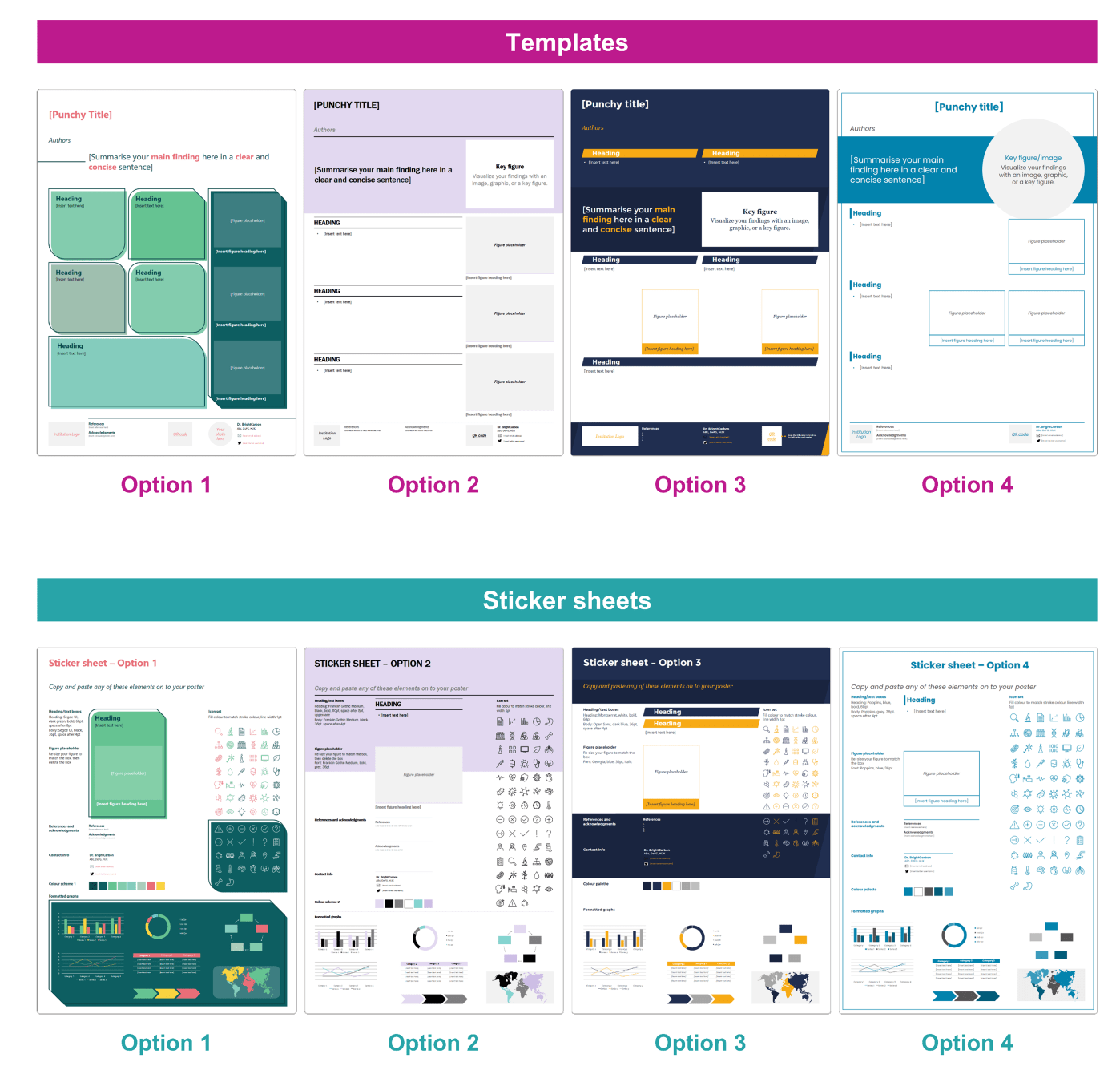
Now, let’s run through some top tips to make sure you get the most out of these templates!
Alignment and guides
Wonky alignment and a poor layout can make your poster look unprofessional before your audience has even had a chance to read all the good stuff! Guides are your secret weapon to help lay your content out in clear, easy to follow sections. We’ve already set up guides in our poster templates, if you can’t see them head to the View tab in PowerPoint and tick Guides.

Guides are important to help align and balance your poster design. Some key things to remember are to keep the border clear and maintain the gaps (gutters) between sections to give your content space to breathe.
If you want to create your own guides, this article shows you how easy it is with our free PowerPoint add-in BrightSlide.
White space
Don’t underestimate the power of what’s NOT on your poster. White space is essential for making a beautiful and effective poster. Your poster should roughly consist of 20-30% text, 30-40% figures and 40% space. Yep, you heard me, 40%! White, or ‘negative’ space is all about creating areas of contrast, with clear focal points to draw your attention to the important parts, and create a flow and hierarchy across your poster. Learn more about the power of white space
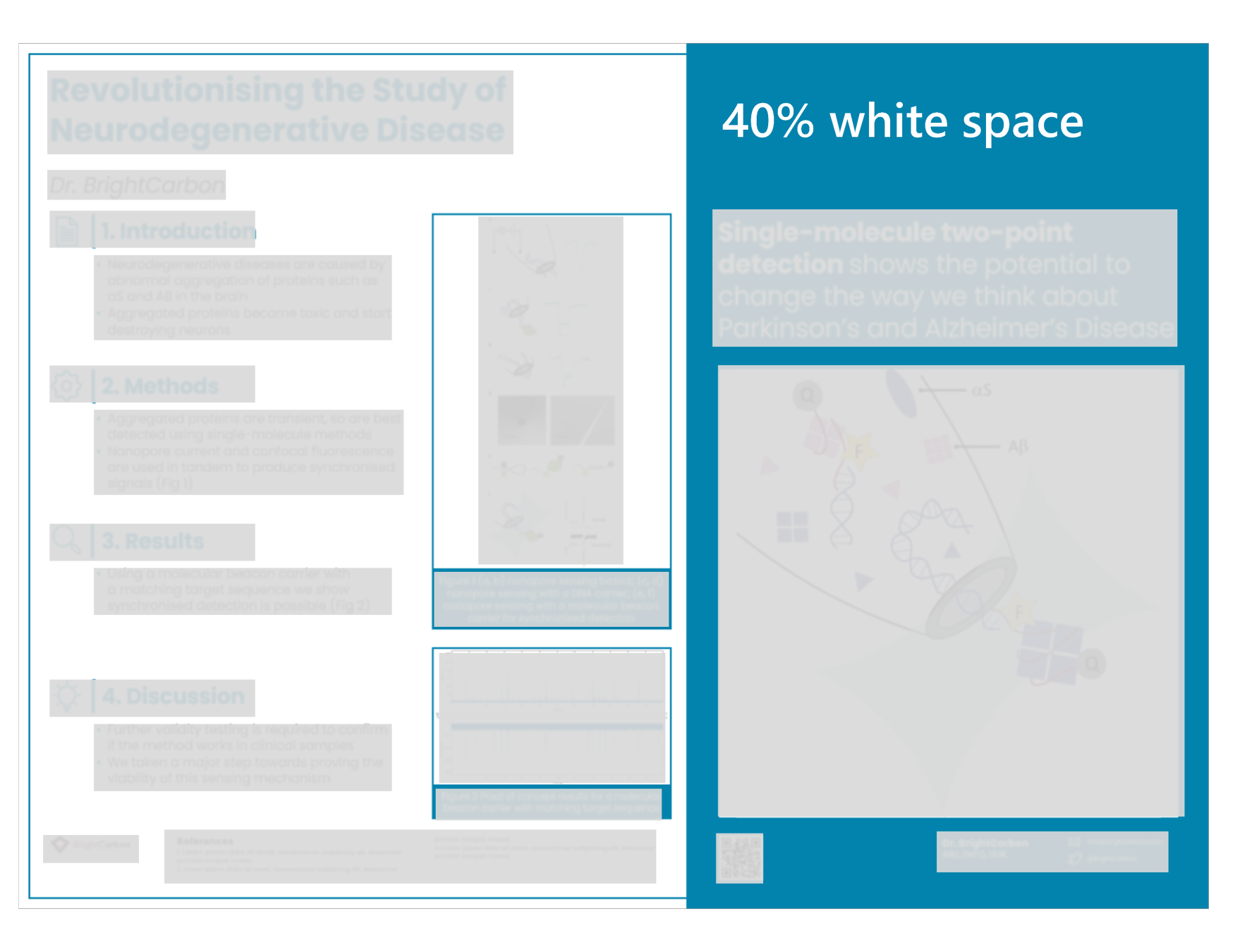
Try to avoid using photos in the background, it can clutter the poster and make it difficult for your audience to read the text or understand the graphs.
Colours
We’ve predesigned our poster templates with carefully selected colour schemes to make them simply beautiful! But we’ve got some tips on how to best apply the set colour scheme to your content.
Each template has a colour palette of 6-8 colours. We recommend using a bright colour as your accent colour to draw attention to key information on your poster. It’s important to use this accent colour in moderation to ensure it holds its attention-grabbing function! Make sure you apply the colour scheme to all the text, images and figures you’re using to keep your poster design consistent
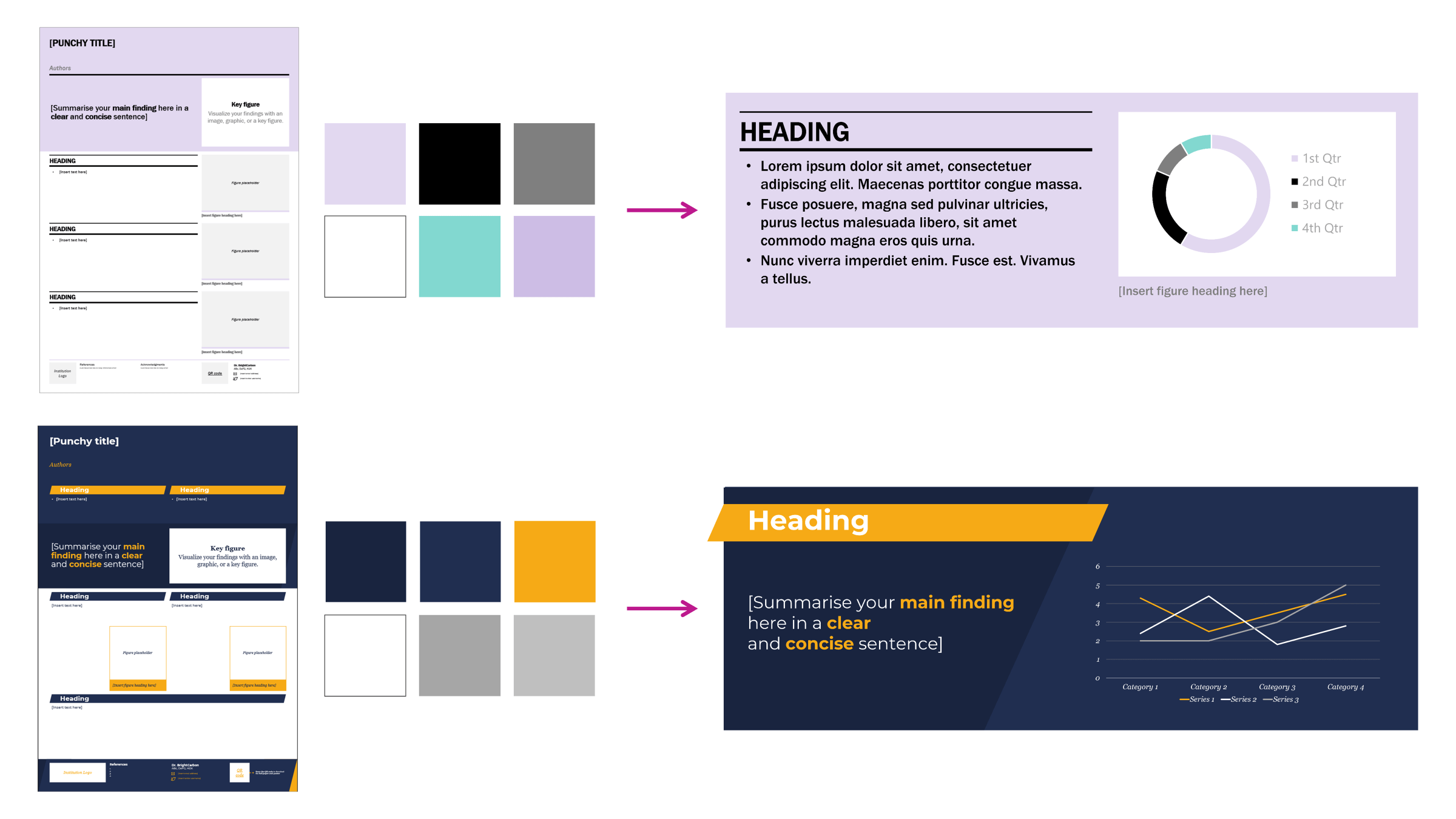
If you have to use specific colours, or fancy creating your own colour palette, here are some top tips:
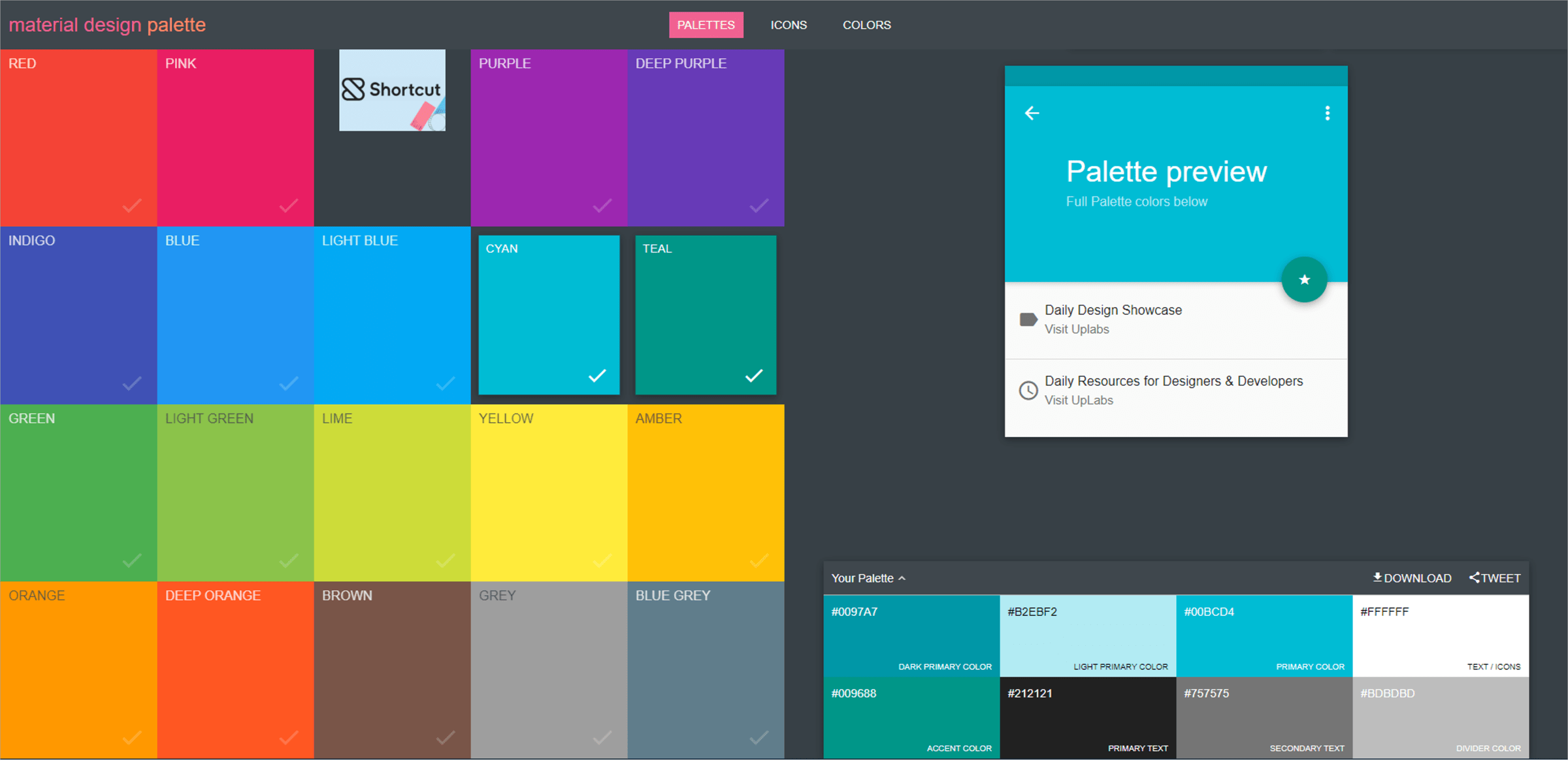
Fonts
Less is more when it comes to fonts, we recommend picking just one or two fonts. Using a second font can help to clearly distinguish your body text from your titles and headings, but this can also be achieved by making your titles and headings bold. Our poster templates have pre-set fonts but if you’re striking out on your own, here are some other fonts we recommend:



Read more about our recommended presentation fonts.
Font size is also important. Your poster needs to be readable from a meter away, and your title and headings need to stand out. For A0 posters, try sticking to these font sizes: